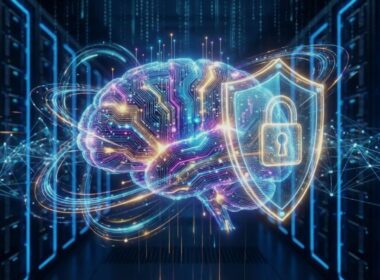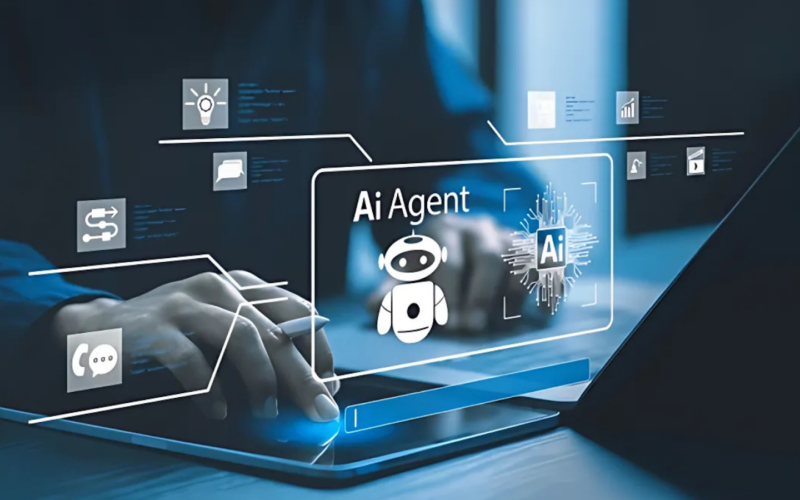AI is no longer just a background tool; it’s making decisions, solving problems, and even being recognised for inventions. In fact, Australia’s Federal Court became the first in the world to rule that AI systems can be listed as inventors on patents, unlike the US and Europe where only humans qualify.
But with so many AI agent types out there, it’s easy to feel lost when figuring out which one fits your needs. Choose the wrong one, and you risk wasting time, money, and effort on a system that doesn’t deliver.
In this article, you’ll learn exactly how each type works, where it’s used, and how to pick the right one for your business.
Key Takeaways
- An AI agent is a system that perceives its environment, processes information, and takes actions to achieve specific goals, from simple rule-followers to advanced learning systems.
- Different AI agent types include Simple Reflex, Model-Based Reflex, Goal-Based, Utility-Based, Multi-Agent, and Hybrid Agents, each suited for specific environments and tasks.
Choosing the right agent means assessing your environment, data quality, decision complexity, scale, and the cost of wrong decisions. - Codewave helps you identify, design, and deploy the AI agent that fits your needs, ensuring it’s accurate, adaptable, and delivers measurable business results.
What is an AI Agent?
You’re on a busy warehouse floor, tracking stock, processing orders, and trying to predict next week’s demand. One system updates inventory counts. Another suggests restock levels. A third handles order routing. Now imagine one system doing all that on its own, responding to changes in real time without you stepping in. That’s the essence of what AI agents do.
In technical terms, an AI agent is a program that perceives its environment, processes the information, makes decisions, and takes action to achieve specific goals. Different AI agent types vary in how they process data, adapt, and act.
What sets them apart is a handful of core traits that decide how capable and reliable they are in different situations.
- Autonomy: Operates without constant human input
- Perception: Gathers data from its environment through sensors or inputs
- Reasoning: Decides what to do based on data and goals
- Action: Executes tasks or responses
- Adaptability: Learns from feedback and changes its behaviour
To understand how these traits come to life, you need to see what’s happening behind the scenes. Without these building blocks, even the smartest AI agent types wouldn’t get far.
- Perception: Collects data from the environment through sensors, APIs, or user inputs. This could be anything from reading temperature sensors in a smart home to processing transaction data in a banking system.
- Reasoning: Interprets the data and decides on the next step using rules, algorithms, or predictive models. It’s where the agent “thinks” and weighs different options before acting.
- Action: Executes the chosen decision in the environment, sending commands to a machine, updating a database, or interacting with a user.
- Learning: Improves over time by analysing results, identifying patterns, and adjusting strategies without needing manual reprogramming.
- Memory: Stores relevant past information so the agent can reference it for better decisions in the future, from remembering user preferences to tracking previous system states.
Want to bring intelligent autonomy into your products? Explore Codewave’s Agentic AI Product Design and Development services to build AI agents that think, decide, and act in ways that drive real business impact. Start creating smarter, more capable products today!
Once you know the parts that make an AI agent tick, the next step is understanding the different AI agent types and how each one uses those parts in its own way.
Types of AI Agents
Not all AI agents think or act the same way. Some follow fixed rules like clockwork, while others learn and adapt as they go. The type you choose can decide how well it handles complexity, change, and long-term goals.
Below is a breakdown of the main AI agent types:
1. Simple Reflex Agents
A Simple Reflex Agent responds directly to what it senses right now, without storing or recalling past information. Think of it like an automatic sliding door, it opens when it detects someone nearby and closes when they leave. It doesn’t “remember” who walked through or guess who might come next; it just reacts to the current trigger.
How It Works
- Sense the environment – Gathers data from sensors, user inputs, or connected devices.
- Match condition – Compares the data to a predefined list of rules (if condition, then action).
- Select action – Chooses the rule that matches the current condition.
- Execute action – Performs the corresponding task instantly.
- Repeat – Starts the process again for the next input, without remembering previous states.
Common models/frameworks:
- Finite State Machines (FSMs)
- Rule-based systems (e.g., production systems in CLIPS)
Key Capabilities
- Automatic sliding doors that open when a motion sensor is triggered.
- Thermostats that turn heating or cooling on/off when the set temperature threshold is reached.
- Industrial safety shut-off systems that cut power when detecting overheating or excessive vibration.
- Basic game NPCs that perform fixed actions when a player is within a certain range.
- Traffic lights with timers that change signals at fixed intervals regardless of traffic flow.
Limitations & Considerations
- No learning ability – cannot improve performance over time.
- Context blind – ignores historical data or trends.
- Inflexible – struggles if conditions change or become more complex.
- High maintenance – rules need manual updating when requirements change.
- Vulnerable to bad input – incorrect or incomplete sensor data can trigger wrong actions.
2. Model-Based Reflex Agents
A Model-Based Reflex Agent makes decisions by considering both the current input and an internal model of how the world works. Unlike Simple Reflex Agents, it remembers relevant information about past states, allowing it to handle situations where not all details are immediately visible.
For example, a warehouse robot that continues moving toward a drop-off point even when a sensor temporarily loses sight of the path is relying on its internal model to “fill in the gaps.”
How It Works
- Sense the environment – Gathers current data from sensors, APIs, or inputs.
- Update internal model – Records and adjusts information about the environment based on new inputs.
- Interpret state – Uses both current data and stored information to get a fuller picture of the situation.
- Match condition – Compares the interpreted state to a set of predefined rules.
- Select action – Chooses the appropriate action that aligns with the perceived state.
- Execute action – Carries out the task while updating the internal model for future steps.
Common models/frameworks:
- State machines with memory
- Bayesian networks
- State estimation algorithms (e.g., Kalman filters)
Key Applications
- Autonomous warehouse robots that continue navigating even if some sensors fail temporarily.
- Self-driving cars using stored map data and past sensor readings to handle poor visibility conditions.
- Smart HVAC systems that adjust temperature based on both current readings and recent patterns in room occupancy.
- Industrial process control where equipment adapts to fluctuations in sensor data without shutting down operations.
- Agricultural monitoring drones that maintain spraying routes despite temporary GPS signal loss.
Limitations & Considerations
- Requires more processing power and storage for its internal model.
- More complex to design and test compared to simple rule-based systems.
- Still rule-bound, cannot independently learn or modify rules without manual updates.
- Performance depends heavily on the accuracy of the internal model; a flawed model can cause poor decisions.
3. Goal-Based Agents
A Goal-Based Agent decides what to do by considering both the current state and a desired outcome. Instead of just reacting or relying on an internal model, it evaluates possible actions to determine which will move it closer to its goal.
For example, a delivery routing AI doesn’t just follow a fixed path, it chooses the fastest available route based on traffic, weather, and delivery deadlines.
How It Works
- Sense the environment – Gathers real-time information from sensors, APIs, or databases.
- Understand current state – Analyses the collected data to define where things stand now.
- Identify goal – Refers to a predefined target, such as “deliver package within 30 minutes” or “reach maximum energy efficiency.”
- Evaluate possible actions – Considers multiple paths or strategies to reach the goal.
- Select best action – Chooses the action that most effectively closes the gap between the current state and the goal.
- Execute action – Carries out the chosen plan, then reassesses to stay aligned with the goal.
Common models/frameworks:
- Search algorithms (A*, Dijkstra’s)
- Planning systems (STRIPS)
- Decision trees
Key Applications
- Delivery route optimisation systems that adjust in real time for traffic and road closures.
- Customer service chatbots that guide users toward resolving a specific issue.
- Autonomous warehouse pickers that plan the most efficient sequence for collecting multiple items.
- Project scheduling tools that adjust timelines and task sequences to meet deadlines.
- Disaster response drones that prioritise reaching trapped individuals before battery runs out.
Limitations & Considerations
- Needs accurate, up-to-date data for good decision-making.
- May require significant computing power to evaluate all options in complex environments.
- Still limited by how clearly the goal is defined, vague or conflicting goals can cause poor results.
- Slower than reflex-based agents when quick, repetitive actions are required.
4. Utility-Based Agents
A Utility-Based Agent chooses actions not just to achieve a goal, but to achieve the best possible outcome according to a scoring system, or “utility function.” It weighs different options, measures how desirable each outcome is, and then picks the one with the highest value.
For example, a ride-hailing app’s AI might decide which driver to assign not only based on distance but also on driver rating, traffic conditions, and likelihood of completing the trip quickly.
How It Works
- Sense the environment – Collects real-time data from sensors, APIs, or other inputs.
- Define possible actions – Lists all feasible moves or decisions it can make in the current state.
- Evaluate outcomes – Uses a utility function to score each potential outcome based on set criteria.
- Select highest-utility action – Chooses the action with the best overall score.
- Execute action – Carries out the selected decision, then repeats the process as conditions change.
Common models/frameworks:
- Decision theory models
- Multi-criteria decision analysis
- Markov decision processes
Key Applications
- Ride-hailing platforms assign drivers to riders for speed, reliability, and cost balance.
- Stock trading bots that select trades based on potential profit, risk, and market volatility.
- Smart grid systems distribute energy to minimise cost while maximising reliability.
- Autonomous delivery drones choose routes that balance speed, energy use, and safety.
- Hospital resource allocation systems decide how to assign staff and equipment to maximise patient outcomes.
Limitations & Considerations
- Requires a well-defined utility function; poor scoring can lead to bad decisions.
- It can be computationally expensive if evaluating many options.
- Performance heavily depends on the quality and timeliness of input data.
- It may produce outcomes that are mathematically optimal but not aligned with human values if utility factors are poorly set.
5. Multi-Agent Systems
A Multi-Agent System (MAS) is made up of multiple AI agents that work together, compete, or both to accomplish tasks. Each agent operates independently, but they share information and coordinate actions when needed.
For example, in a smart traffic management network, one agent controls a single intersection, while others manage nearby intersections, and together they keep city traffic flowing smoothly.
How It Works
- Individual perception – Each agent gathers data from its assigned environment or task area.
- Local decision-making – Agents decide on actions based on their own data, rules, or goals.
- Communication – Agents share relevant information with other agents in the system.
- Coordination – Actions are adjusted to avoid conflicts and improve overall performance.
- Execution – Agents carry out tasks individually or as part of a group strategy.
Common models/frameworks:
- Agent communication languages (ACLs)
- Distributed problem-solving models
- Contract Net Protocol
Key Applications
- Smart traffic control systems coordinate multiple intersections for smoother city-wide flow.
- Warehouse robotics fleets where each robot handles a section but works together to complete large orders faster.
- Disaster response systems with drones surveying different areas and sharing findings.
- Financial trading systems with specialised agents handling different markets and strategies.
- Energy grid management where local agents optimise consumption and production for their sector.
Limitations & Considerations
- Coordination adds complexity, and poor communication between agents can cause inefficiencies.
- Requires standardised protocols for smooth collaboration.
- Potential for conflicting goals among agents if priorities are not well-aligned.
- Debugging and monitoring can be harder than with single-agent setups.
Ready to put generative AI to work for your business? Explore Codewave’s GenAI Development services to design and deploy advanced AI agent types that can create, adapt, and respond intelligently to complex challenges. Start building smarter, more capable systems with GenAI today!
Now that you know the different AI agent types, let’s see how to pick the one that suits your task best.
How to Choose the Right AI Agent for a Task
Choosing the right AI agent isn’t about picking the most advanced one; it’s about finding the one that fits your task, data, and environment. The wrong choice can lead to wasted resources or poor results, while the right one can save time, cut costs, and improve accuracy.
Here are the factors that matter when making that call.
1. Nature of the Environment
If your environment is fully observable and predictable (like a fixed assembly line), a Simple Reflex Agent can be ideal. But if it’s partially observable, such as a delivery system where GPS signals may drop, a Model-Based Reflex Agent or Goal-Based Agent will perform better.
For highly unpredictable settings, such as financial markets or emergency response, a Utility-Based or Learning Agent will handle uncertainty more effectively.
2. Decision Complexity and Time Constraints
Some tasks require instant decisions with minimal computation, such as shutting off a machine during an overload, perfect for a Simple Reflex Agent.
Others need time to evaluate multiple strategies, like route optimisation for delivery fleets, where a Goal-Based or Utility-Based Agent can consider trade-offs before acting.
3. Data Availability and Quality
If your system has continuous, high-quality data streams, Utility-Based and Learning Agents can make the most of it.
In cases where data is sparse or comes in bursts, a Model-Based Reflex Agent’s internal state tracking helps fill gaps without halting operations.
4. Scale and Coordination Needs
A single-agent approach might be enough for isolated, self-contained tasks. But if you need multiple units working together, such as a network of drones scanning different parts of a disaster zone, a Multi-Agent System is more effective.
The choice here depends on how well agents can share and act on information in your setup.
5. Cost of Wrong Decisions
In environments where mistakes carry heavy penalties, like healthcare diagnostics or air traffic control, agents that evaluate multiple outcomes (Utility-Based or Learning Agents) are worth the extra computation time and complexity.
In low-risk, repetitive scenarios, simpler agents reduce costs without much downside.
Looking to make smarter, data-driven decisions? Explore Codewave’s AI/ML Development services to build AI agent types that learn from data, adapt to change, and deliver actionable results for your business. Start turning data into intelligence today!
By understanding how different AI agent types work and where they shine, you can make choices that save time, reduce costs, and improve outcomes. The right agent doesn’t just get the job done; it does it in a way that fits your goals, data, and constraints, setting you up for long-term success.
Why Choose Codewave for AI Agent Solutions?
When you’re ready to bring AI into your business, you need more than just generic automation. At Codewave, we go beyond standard tools by designing and delivering AI agents tailored to your exact needs, from choosing the right AI agent type to building a system that’s accurate, adaptable, and ready for real-world challenges.
Curious to see how Codewave’s AI agent solutions can transform your operations? Explore our portfolio to see how we’ve helped businesses across industries deploy the right AI agent types to solve complex problems, boost efficiency, and deliver measurable results.
What You Get with Codewave’s AI Agent Solutions
- Faster, Smarter Decisions: Struggling with slow responses in critical operations? Our AI agents process data and act in real time, reducing delays and improving accuracy.
- Tailored Agent Selection: Unsure which AI agent type fits your business? We assess your goals, environment, and data to recommend and build the right one for you.
- Reduced Manual Workload: Spending too much time on repetitive tasks? Our automation handles the routine, freeing your team to focus on strategic work.
- Lower Operational Costs: Concerned about rising expenses? Codewave’s AI-driven processes cut costs without compromising performance or results.
Our Services Include
- AI Agent Strategy Consultation: We evaluate your current processes and recommend the most suitable AI agent types for your goals, ensuring the solution can scale and deliver long-term value.
- Custom AI Agent Design & Development: From concept to deployment, we build agents that match your operational needs, whether it’s fast-reacting reflex agents or multi-agent systems for complex coordination.
- Integration with Business Systems: We connect your AI agents with your existing platforms, ERP, CRM, logistics, or analytics tools, so data flows in real time and actions stay in sync.
- Performance Dashboards & Analytics: We deliver interactive dashboards that turn agent data into clear, actionable insights, helping you track efficiency, accuracy, and ROI at a glance.
Curious to see how the right AI agent type could transform your business? Book a session with Codewave’s experts and find out how we can design, build, and deploy agents that deliver measurable results.
FAQs
Q. Can AI agents work effectively with limited or incomplete data?
A. Yes, some AI agents are designed to operate well even when data is incomplete. For instance, Model-Based Reflex Agents can use stored information and internal models to fill in gaps when real-time inputs are missing. This makes them useful in situations where connectivity is unstable or data is delayed, such as remote operations or environments with frequent sensor outages.
Q. How do I ensure my AI agent is making ethical decisions?
A. Ethical AI requires clear guidelines, transparent decision-making processes, and human oversight. You can set boundaries for what an agent can and cannot do, and regularly audit its outputs to ensure they align with your organisation’s values. For higher-risk areas like healthcare or finance, combining automated decision-making with human review helps maintain ethical integrity.
Q. Will using different AI agent types require separate teams or tools?
A. Not necessarily. With the right development framework, you can design multiple AI agent types within a single system. For example, a hybrid approach might combine reflex agents for instant actions with utility-based agents for more complex choices, all running on the same platform. This allows you to share infrastructure and reduce the operational burden of managing multiple agents.
Q. Can AI agents adapt to sudden changes in regulations or industry standards?
A. Some AI agents, especially Learning Agents, can quickly adjust when given updated parameters or retrained on new data. If regulations shift, for instance, in data privacy, the agent’s logic or dataset can be updated to comply. This adaptability helps businesses avoid disruptions and maintain compliance without needing to rebuild systems from scratch.
Q. How do I measure the success of an AI agent in my business?
A. Success metrics depend on your goals. You might track response times, accuracy rates, cost savings, error reduction, or revenue growth. For example, if your AI agent is deployed in logistics, improvements in delivery times and route efficiency could be key indicators. Setting measurable benchmarks from the start makes tracking and evaluating performance much easier.
Codewave is a UX first design thinking & digital transformation services company, designing & engineering innovative mobile apps, cloud, & edge solutions.







